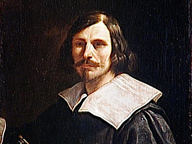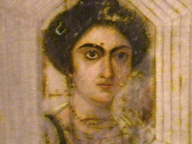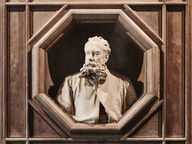Dynamism of a Speeding Horse + Houses
Umberto Boccioni turned to sculpture in 1912 after publishing his manifesto on the subject on April 11 of that year. The Futurist aesthetic platform as articulated in this document advocates the use of various materials in a single work, the rejection of closed form, and the suggestion of the interpenetration of form and the environment through the device of intersecting planes. Here Boccioni assembled wood, cardboard, and metal, with painted areas showing a Futurist handling of planes influenced by the Cubism of Pablo Picasso and Georges Braque.
Boccioni, like Raymond Duchamp-Villon, made studies of horses from nature before developing the motif into a nonspecific symbol of the modern age. Here he used the horse to demonstrate his observation that the nature of vision produces the illusion of a fusing of forms: when the distance between a galloping horse and a stationary house is visually imperceptible, horse and house appear to merge into a single changing form. Sculptures such as the present example are concerned with the apparent compression of space as an object traverses it, and with the nature of the object’s redefinition by that space.
VENEZIA ● COLLEZIONE PEGGY GUGGENHEIM ● UMBERTO BOCCIONI ● GUGGENHEIM ● BOCCIONI ● DINAMISMO DI UN CAVALLO IN CORSA + CASE
COMMENTI
LE OPERE
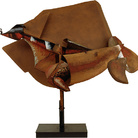 Dinamismo di un cavallo in corsa + case
1915 | Olio su tela
Dinamismo di un cavallo in corsa + case
1915 | Olio su tela
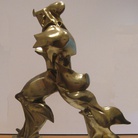 Forme uniche nella continuità dello spazio
Statua
Forme uniche nella continuità dello spazio
Statua
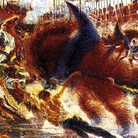 La città che sale
1910 | Olio su tela | 200 x 290 cm.
La città che sale
1910 | Olio su tela | 200 x 290 cm.
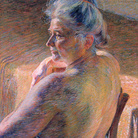 Nudo di spalle
1909 | Olio su tela | 55 x 60 cm.
Nudo di spalle
1909 | Olio su tela | 55 x 60 cm.
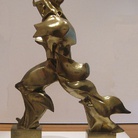 Forme uniche della continuità nello spazio
1913 | Bronzo
Forme uniche della continuità nello spazio
1913 | Bronzo
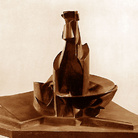 Sviluppo di una bottiglia nello spazio
1913 | Bronzo
Sviluppo di una bottiglia nello spazio
1913 | Bronzo
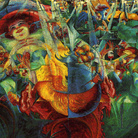 La risata
1911 | Olio su tela | 145 x 110 cm.
La risata
1911 | Olio su tela | 145 x 110 cm.
Map
Works in Italy
Works around the world
